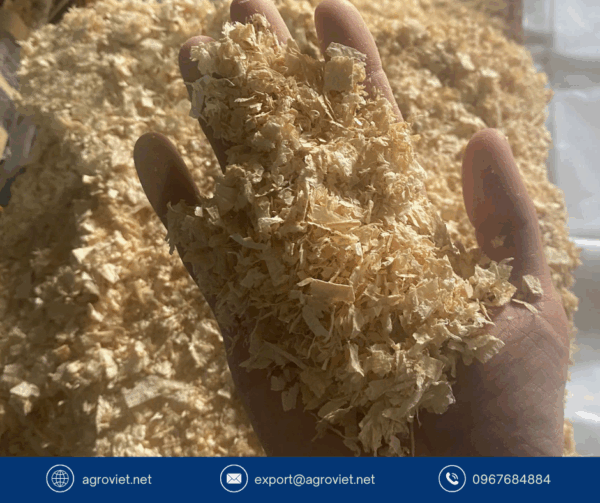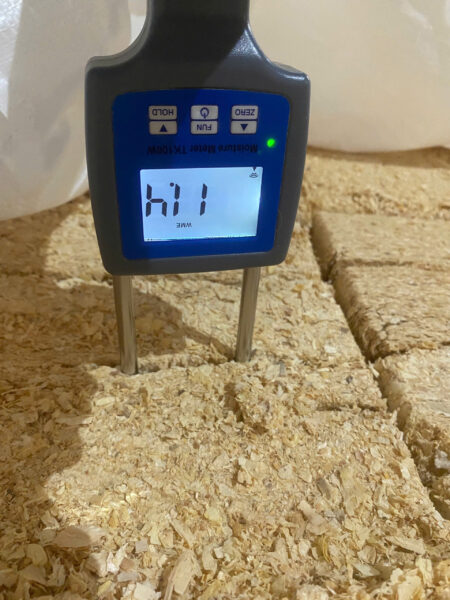Maintaining a clean and odor-free chicken coop is essential for the health and happiness of your backyard flock. Wood shavings are a popular bedding choice due to their affordability, absorbency, and ability to contribute to a hygienic coop environment. This comprehensive guide explores how to use wood shavings effectively, incorporating practical tips, a case study, and an example to help you keep your chicken coop fresh and odor-free.

Why Choose Wood Shavings for Your Chicken Coop?
Wood shavings are an excellent bedding material for chicken coops, offering absorbency, affordability, and a natural carbon source for composting. They help manage moisture from chicken manure, reducing odors and preventing bacterial growth. However, not all wood shavings are created equal—always opt for untreated, dust-extracted shavings to ensure the safety of your flock.
Watch more: https://youtu.be/oRsAIUQNEr8?si=4H6glgkT5jzT0p4I
Benefits of Wood Shavings for Odor Control
Wood shavings absorb moisture effectively, which is critical for controlling ammonia buildup—a common source of coop odors. Their loose texture allows for easy turning, promoting aeration and decomposition. This reduces the risk of mold and keeps the coop smelling fresh. Additionally, wood shavings are widely available and budget-friendly, making them a practical choice for backyard chicken keepers.
Selecting the Right Wood Shavings
Choose untreated pine or hardwood shavings, as treated wood may contain harmful chemicals. Ensure the shavings have undergone dust extraction to prevent respiratory issues in chickens. Fine to medium-grade shavings are ideal, as they provide good absorbency without being too coarse. Avoid cedar shavings, as their strong aroma can irritate your chickens’ respiratory systems.
Setting Up Your Coop with Wood Shavings
Start with a clean coop and spread a 10-15 cm layer of wood shavings across the floor. This initial layer provides a solid base for the deep litter method, which helps maintain cleanliness over time. Ensure the shavings are evenly distributed, particularly in high-traffic areas like under perches, where manure tends to accumulate.
Implementing the Deep Litter Method with Wood Shavings
The deep litter method is a low-maintenance approach to coop cleanliness. Begin with a thick layer of wood shavings and allow your chickens to naturally turn the litter as they scratch. Add fresh shavings every few months to maintain absorbency. Regularly rake the litter to mix in manure, encouraging decomposition and minimizing odors.
Monitoring Moisture Levels
Moisture control is key to an odor-free coop. Check the shavings weekly for damp spots, especially in corners or under waterers. If you notice wet patches, remove them and replace with fresh shavings. Proper ventilation, such as windows or vents, helps keep the litter dry and prevents ammonia buildup.

Case Study: Sarah’s Odor-Free Coop Transformation
Sarah, a backyard chicken keeper in rural Ohio, struggled with persistent coop odors due to poor bedding choices. Her small flock of six hens lived in a 2×3 meter coop, but the straw bedding she initially used became soggy and smelly. After researching, Sarah switched to untreated pine shavings and adopted the deep litter method. She started with a 12 cm layer of shavings and added 2-3 cm of fresh material monthly. Within two weeks, the coop’s odor was significantly reduced, and her hens appeared more active. Sarah also improved ventilation by adding a small vent to the coop’s roof, ensuring the shavings remained dry. After six months, her coop remained odor-free, and the composted shavings enriched her garden soil.
Cleaning Feeders and Drinkers
Dirty feeders and drinkers can contribute to coop odors. Clean them weekly with warm water and a natural disinfectant like white vinegar. Ensure no feed or water spills onto the shavings, as this can create damp spots that foster bacteria and smells.
Managing Droppings Under Perches
Chickens often produce the most manure under their perches at night. Use a deeper layer of wood shavings in these areas and remove the top, soiled layer daily or every few days. This simple step prevents manure buildup and keeps odors at bay.
Performing a Seasonal Deep Clean
Even with the deep litter method, a thorough coop cleaning is necessary twice a year. Remove all shavings, scrape off caked-on manure, and wash the coop with a natural disinfectant. Allow the coop to dry completely before adding a fresh layer of wood shavings. This reset ensures a clean, odor-free environment.
Example: Weekly Coop Maintenance Routine
Here’s a sample routine for maintaining a clean and odor-free coop using wood shavings:
-
Monday: Inspect shavings for dampness and remove any wet spots. Add a thin layer of fresh shavings if needed.
-
Wednesday: Rake the litter to mix in manure and promote aeration.
-
Friday: Clean feeders and drinkers with vinegar and water.
-
Sunday: Remove droppings under perches and top up with fresh shavings.
This routine, paired with good ventilation, keeps the coop fresh and minimizes odors.
Preventing Pests with Wood Shavings
Wood shavings alone don’t deter pests, but you can enhance their effectiveness by sprinkling diatomaceous earth into the litter. This natural powder helps control mites and other parasites. Apply it sparingly to avoid irritating your chickens, and reapply after heavy cleanings.
Ensuring Proper Ventilation
Good airflow is critical for an odor-free coop. Install vents or windows to allow moisture and ammonia to escape. Avoid sealing the coop too tightly, especially in humid climates, as this traps odors and promotes mold growth in the shavings.
Composting with Wood Shavings
Wood shavings are an excellent carbon source for composting chicken manure. When cleaning the coop, transfer soiled shavings to a compost bin and mix with other organic matter. The resulting compost is rich in nutrients and perfect for garden use, reducing waste and benefiting the environment.
Common Mistakes to Avoid
Avoid using too thin a layer of shavings, as this reduces absorbency and leads to odors. Don’t skip regular maintenance, as neglecting damp spots or droppings can cause ammonia buildup. Finally, ensure you’re using untreated shavings—chemical-treated wood can harm your flock and contribute to unpleasant smells.
Tips for Odor-Free Nesting Boxes
While wood shavings work well in nesting boxes, keep them clean by removing soiled material daily. Consider mixing in a small amount of hemp for added absorbency and antibacterial properties. This keeps eggs clean and reduces odors in the nesting area.
Balancing Cost and Effectiveness
Wood shavings are cost-effective, but their quality matters. Invest in high-quality, dust-extracted shavings to avoid health issues. Buying in bulk can save money, but store shavings in a dry place to prevent mold before use.

Sustainability with Wood Shavings
Wood shavings are a sustainable choice when sourced responsibly. Look for shavings from sustainably managed forests or local sawmills. Their compostability further reduces environmental impact, making them an eco-friendly option for chicken keepers.
Conclusion
Using wood shavings in your chicken coop is a practical and effective way to maintain a clean, odor-free environment. By selecting high-quality shavings, implementing the deep litter method, and following a regular maintenance routine, you can ensure your flock thrives in a healthy space. With proper care, wood shavings not only control odors but also contribute to a sustainable composting system, benefiting both your chickens and your garden.
Read more: https://vietnambestwood.com/general/pine-wood-shavings-hygiene-usage/
